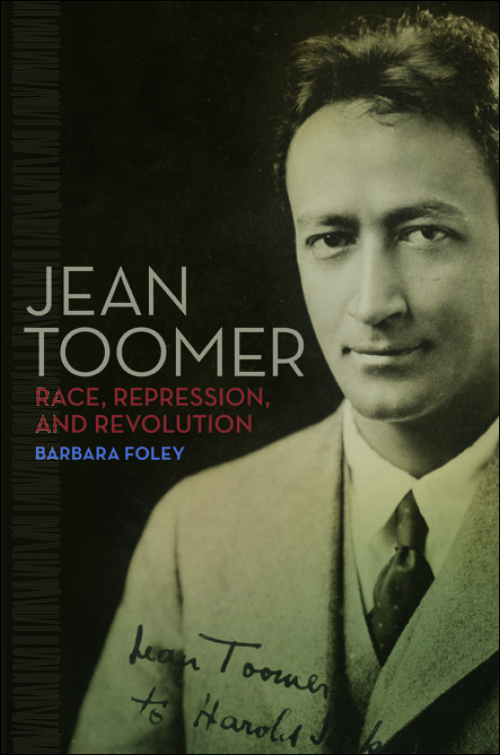Jean Toomer, Mulatto and Modernist: the Fused Race and Fused Form of Cane
Oklahoma State University
May 1997
76 pages
Rhonda Lea McClellan
Submitted to the Faculty of the Graduate College of the Oklahoma State University in partial fulfillment of the requirements for the Degree of MASTER OF ARTS
Preface
In the fall of 1993, I enrolled in Dr. Leavell’s modern/contemporary literature course that examined familiar “novels” under a different form, the short story cycle. We discussed how familiiar texts, like Anderson’s Winesburg, Ohio, Faulkner’s Go Down Moses, and Hemingway’s In Our Time, labeled by critics as novels, could be viewed under the definitions of a different genre. As we analyzed this genre, I thought how vulnerable art and artists are at the hands of critics who define pieces based on literary traditions. Chagrined, I thought of the pieces of literature that I could have misread.
When we finally turned the pages of Jean Toomer’s Cane and examined the pioneering strategies of this modern writer, the consequences of misleading critiques became apparent to me. Rarely do we read of the Harlem Renaissance without seeing the name Jean Toomer. Accordingly, scholars contend that Toomer contributed to the awakening of the African-American experience in the 1920s and that his Cane secured his place in the African American canon.
But after reading biographical sketches, I found that Toomer, as an orphaned mulatto, rarely felt as if he belonged to any racial category. Moving between both black and white, rich and poor, young and old, Toomer knew little about securing his social position. He defined race as a social institution, an unjust categorization of Americans, creating a prejudice and fragmented society. Toomer, therefore, refused to be placed within these confines. As a result of my reading, I believe that Toomer’s social “drifting” is his personal illustration that Americans should not feel restricted to social categories and that Americans do not lead isolated lives but actually share a common experience-alienation. In fact, as an ostracized young man, he found only one way to find peace within his world, and that peace came from writing. His alienation gave Toomer an objective perspective that lead to his social and literary philosophies.
From Dr. Leavell’s emphasis on the importance of literary form and theme, I realized that critics fail to understand Cane’s structure relative to its theme. If critics did not apprehend Toomer’s racial ideology presented in Cane, how could they interpret the significance of the text’s structure? A man who would not be confined to one race could not limit his art to conventions of one culture. In Cane, Toomer fuses the art forms of the African-American with the European.
I see Toomer, a man eventually marginalized because of his racial ambiguity, creating a text, Cane, that follows the traditions of American literary pursuits. In the tradition of Franklin, Emerson, Hawthorne, and Whitman, Toomer attempts to create an American character and structure. Toomer’s mulatto represents modern man, and he presents these isolated characters in a modern, fragmented society. He fuses his racial ideology into Cane’s structure. Like its multi-racial characters, Cane’s structure depends on the aesthetic conventions of many races. Toomer’s literary innovations with form and theme make him a Modernist. Because of his ethnicity, however, Toomer found his text as much on the periphery as himself.
After Toomer voiced his racial views and his literary aspirations, scholars would contend that Toomer “deserted his people.” I maintain that readers misinterpret Cane’s projection of his mixed-race characters and the significance of its multi-cultural form. Critics have not fully understood Toomer or Cane. Toomer’s views blur lines that critics fail to reevaluate.
After examining Toomer and his text, I can appreciate the complexity of a man who refused categorization and a book that evades literary classification. In the first chapter, I will place Toomer in American literary traditions and provide biographical details that influenced his social views. In the second chapter, I will discuss Toomer’s racial and social ideology and its impact on Cane. In the third chapter, I will focus on the theme and structure of Cane’s prose. In the fourth chapter, my focus will shift to the merging of Cane’s poetic theme and structure. Opposing other critics who have placed Toomer in the African-American canon, I propose that Jean Toomer, who was influenced by white Modernist writers, such as Anderson and Frank, experiments with a national character-the mulatto-and a national form-a structure blending the art forms of the African American and European American-and writes within the broader traditions of American literature.
Read the entire thesis here.
